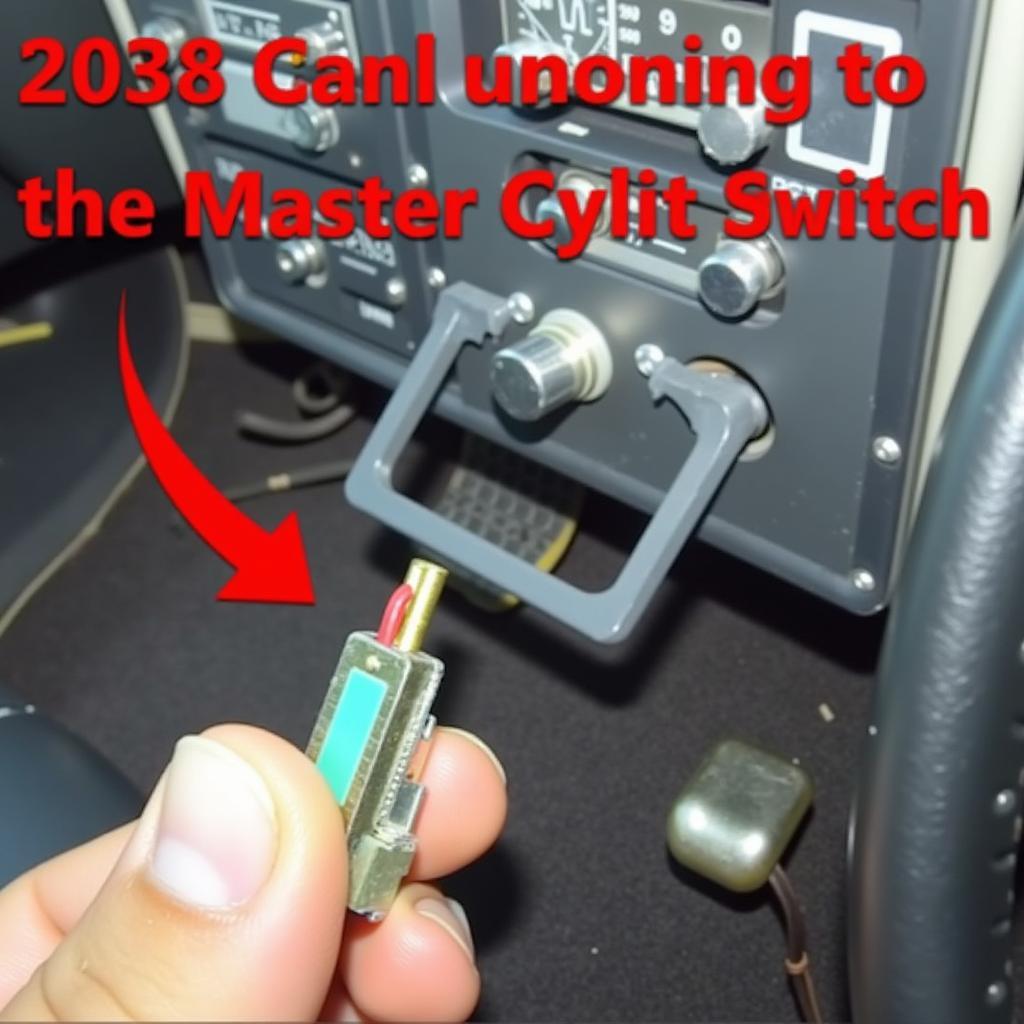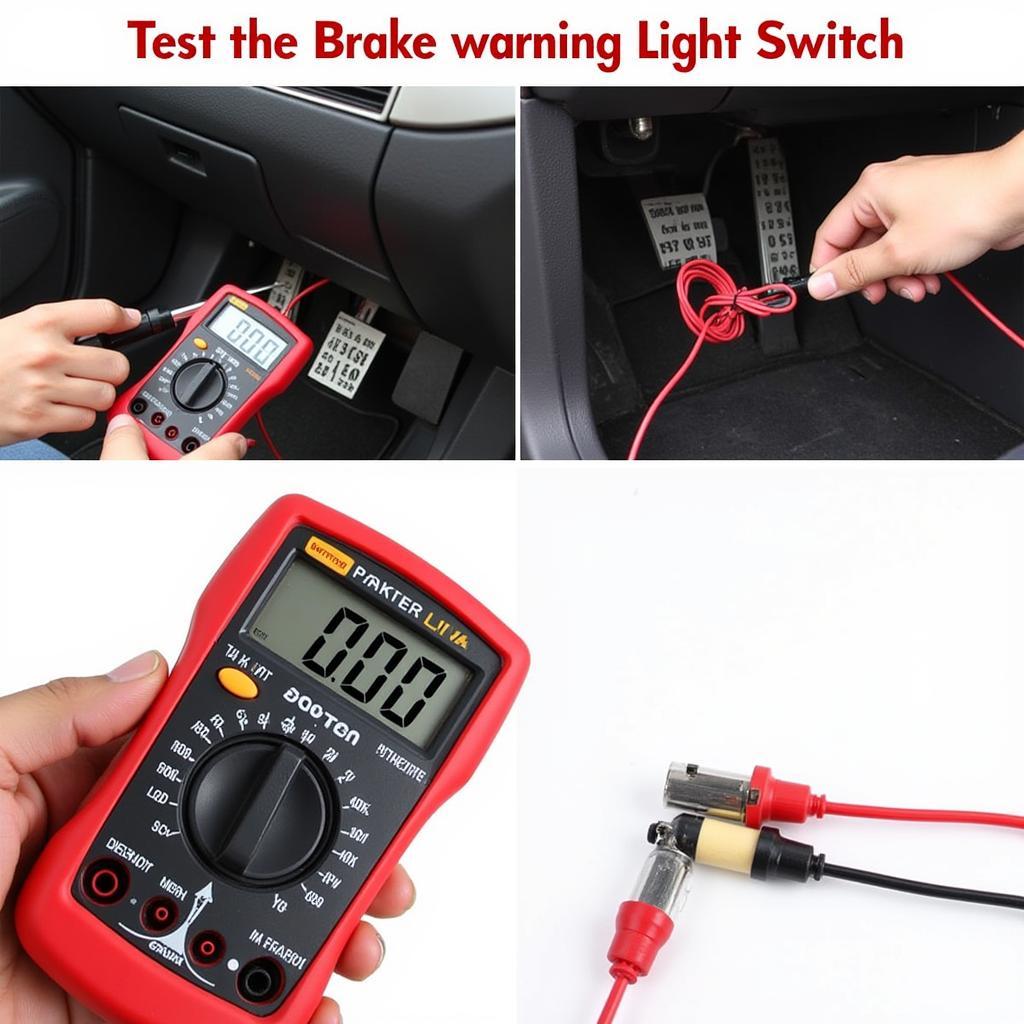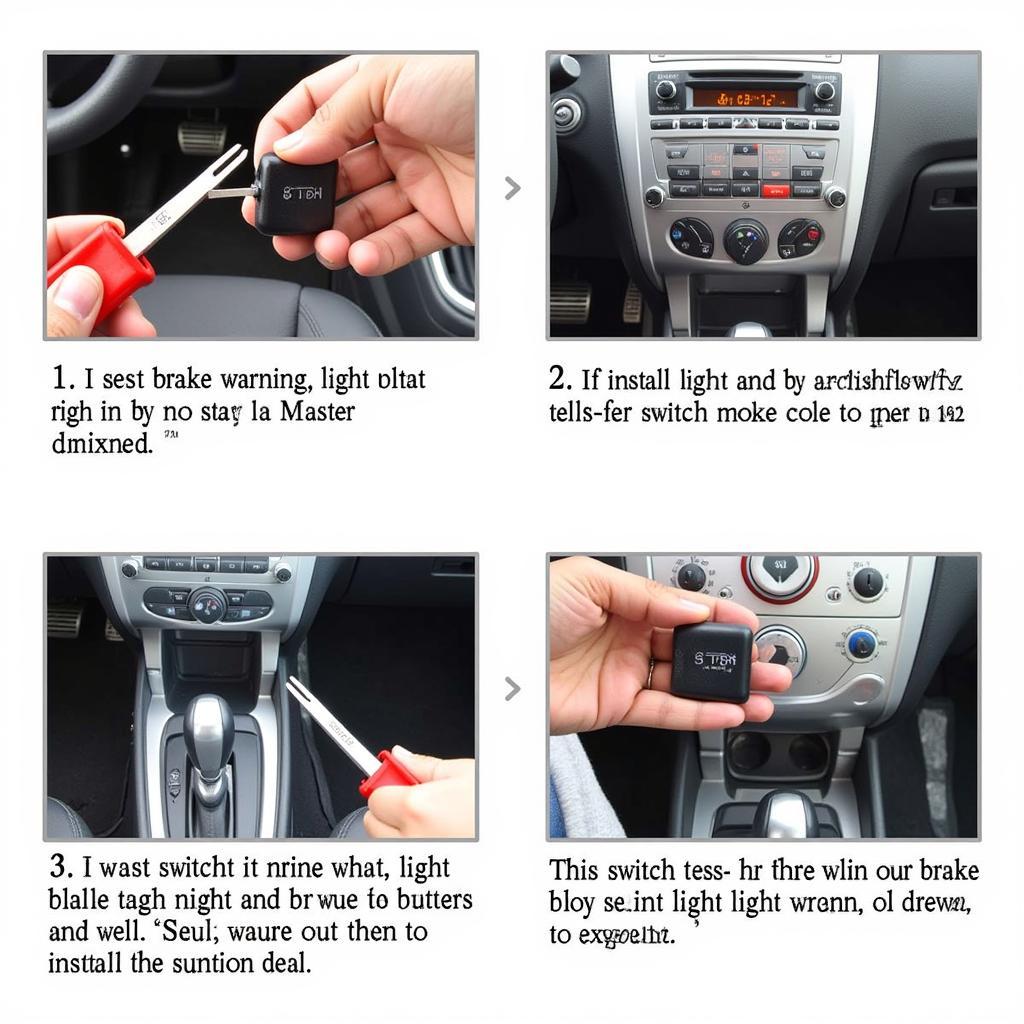Having trouble with your 1977 Chrysler New Yorker’s brake warning light staying on? You’re not alone. This classic car, known for its style and comfort, can sometimes experience issues with its braking system. One of the most common culprits is the brake warning light switch. This small but crucial component is responsible for activating the brake lights and warning you of potential problems within the system. This article will guide you through the common causes of a malfunctioning brake warning light switch in your 1977 Chrysler New Yorker and provide you with potential solutions to get you back on the road safely.
Understanding the Brake Warning Light Switch
The 1977 Chrysler New Yorker brake warning light switch is a pressure-activated switch typically located on the master cylinder. When you press the brake pedal, it increases the hydraulic pressure in the braking system. This pressure activates the brake warning light switch, which in turn, completes the circuit and illuminates the brake lights at the rear of your car. Simultaneously, the switch may also activate a warning light on your dashboard, indicating a potential issue with your braking system.
Common Causes of Brake Warning Light Switch Problems
Several factors can cause your 1977 Chrysler New Yorker brake warning light switch to malfunction. Here are some of the most common:
- Faulty Brake Warning Light Switch: The switch itself is a mechanical component and can wear out over time. If the internal contacts are worn or damaged, the switch may not function correctly.
- Misadjusted Switch: The brake warning light switch needs to be correctly adjusted to engage and disengage at the appropriate brake pedal position. A misaligned switch can cause the brake lights to stay on constantly or not illuminate at all.
- Hydraulic Fluid Leak: If there’s a leak in the brake lines, the hydraulic pressure might not be sufficient to activate the switch, resulting in malfunctioning brake lights.
- Worn-out Brake Pads: While not directly related to the switch, worn-out brake pads can sometimes cause the brake pedal to travel further down, potentially affecting the switch’s engagement.
 1977 Chrysler New Yorker Brake Warning Light Switch Location
1977 Chrysler New Yorker Brake Warning Light Switch Location
Troubleshooting Your Brake Warning Light Switch
Before replacing the brake warning light switch, it’s essential to troubleshoot other potential issues that might be triggering the warning light.
1. Check the Brake Fluid Level:
The first step is to check the brake fluid level in the master cylinder reservoir. If the fluid level is low, it indicates a leak in the system, which needs to be addressed immediately.
2. Inspect the Brake Lines and Hoses:
Carefully examine all the brake lines and hoses for any signs of leaks, cracks, or damage. Replace any damaged components immediately.
3. Inspect the Brake Pads:
Check the thickness of your brake pads. If they are worn down to the minimum thickness indicator, they need to be replaced.
4. Test the Brake Warning Light Switch:
Locate the brake warning light switch on the master cylinder. With the ignition off, disconnect the electrical connector from the switch. Using a multimeter, check for continuity across the switch terminals. The switch should be open (no continuity) when the brake pedal is not pressed and closed (continuity) when the pedal is pressed. If the switch doesn’t show continuity when the pedal is pressed or shows continuity when it’s not, the switch needs to be replaced.
 Testing the 1977 Chrysler New Yorker Brake Warning Light Switch
Testing the 1977 Chrysler New Yorker Brake Warning Light Switch
Replacing the Brake Warning Light Switch
Replacing the brake warning light switch is a relatively straightforward procedure:
1. Disconnect the Battery:
Before working on any electrical components, disconnect the negative battery cable to prevent electrical shorts.
2. Locate and Remove the Old Switch:
Locate the switch on the master cylinder and carefully disconnect the electrical connector. Using a wrench, loosen and remove the old switch from the master cylinder.
3. Install the New Switch:
Apply a small amount of brake fluid to the threads of the new switch and carefully thread it into the master cylinder. Tighten the switch securely but avoid over-tightening.
4. Reconnect the Electrical Connector:
Reconnect the electrical connector to the new switch.
5. Adjust the New Switch:
If necessary, adjust the new switch according to your car’s service manual specifications.
6. Refill the Brake Fluid:
Refill the master cylinder with fresh brake fluid to the recommended level.
7. Bleed the Brakes:
After replacing the switch, it’s crucial to bleed the brakes to remove any air that may have entered the system.
8. Test the New Switch:
Turn on the ignition and check if the brake lights are functioning correctly. Press the brake pedal and ensure the lights illuminate. Also, check if the dashboard warning light goes off.
 Replacing the 1977 Chrysler New Yorker Brake Warning Light Switch
Replacing the 1977 Chrysler New Yorker Brake Warning Light Switch
Expert Advice
John Miller, ASE Certified Master Technician suggests, “When dealing with brake issues, especially warning lights, it’s always best to err on the side of caution. Even if you think it’s a minor issue with the switch, having your braking system thoroughly checked by a qualified mechanic is always recommended.”
Conclusion
A malfunctioning brake warning light switch might seem like a minor inconvenience, but it can significantly compromise your safety and that of other road users. Addressing the issue promptly and ensuring your brake warning light switch is in perfect working condition is crucial for safe and enjoyable driving in your classic 1977 Chrysler New Yorker. Remember, while this guide provides general troubleshooting steps, if you’re uncomfortable working on your car’s braking system, seeking assistance from a qualified mechanic is always the safest option.

